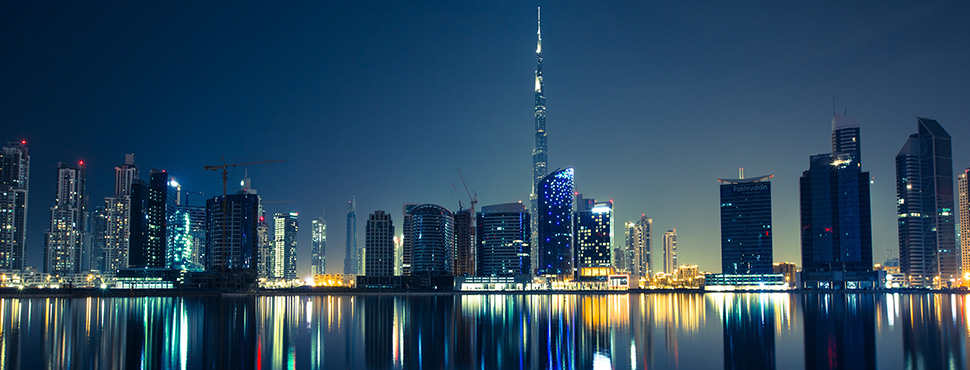In this regular series of features we recognise the genuine trailblazers of travel retail, from bricks and mortar wizardry to e-commerce ingenuity. Dubai’s airports are two of the world’s most technologically advanced travel, retail and leisure hubs. What lessons should duty free retailers learn from them about how best to deploy the latest techniques, asks Blackjack Promotions’ MD Sally Alington?
Dubai International Airport (DXB) is the world’s busiest international airport, with 78 million passengers last year and is likely to get even busier as a whole range of major airport infrastructure improvements roll out over the next few years. The target is for it to be able to handle 100 million travellers by 2023. Meanwhile, its sister airport, which opened to passengers in 2013, Al Maktoum International at Dubai World Central (DWC), will undergo a $32bn expansion that will enable it to accommodate more than 220 million passengers a year.
Technology is key to being able to handle passengers in these kind of numbers and both airports are already two of the world’s most technologically advanced travel hubs. What’s more, Dubai recently hosted an international exhibition on airport technology, with some eye-opening new products on display, including intelligent trolleys, self- parking vehicles, modular moving cabin ‘pods’ for VIPs and travellers with reduced mobility, along with facial recognition systems, to name but a few. All of which, when used in the right way, could have a very positive impact on the travel retail sector.
DXB, for example, has just introduced an innovative new system, built by NCR Corporation and integrated with Visioglobe, that helps passengers navigate their way around the terminals and departure lounges – hugely important when millions of new travellers are going to be landing at the airport every year and are unfamiliar with the surroundings. This system allows passengers to scan boarding passes at an NCR kiosk to view a map and recommended route to their departure gates.
For duty free retailers, the NCR system also means that passengers will have more time to explore the airport’s shops and range of products on offer, as well as relaxing and enjoying the F&B outlets, something that should drive up non-aeronautical revenues. Additionally, airport staff can publish, map, route, and contribute point-of-interest data to kiosk, web and mobile channels in a single step – and also quickly and easily add in communications about store and brand promotions.
The next big thing could well be the intelligent trolleys on show in Dubai earlier this year as part of a recent airport technology exhibition. They can be used to deliver the same kind of communications as the kiosks or the traditional airport app, meaning that retailers may soon be able to ‘push’ their messaging to consumers at the same time as they push their hand luggage around the departure lounge.
An increasing trend is for retail staff and roving ambassadors to be equipped with tablets, smart phones and other mobile devices to handle multiple functions. Data capture is a key part of this, enabling greater insight into shopper behaviour and enhancing the ability to drive continuous improvement for the customer. However, these platforms can also be used to keep staff updated with the latest information, whether that’s about the brands they work for, details of products or promotions available, or the latest news on what’s going on around the airport.
In addition to mobile gadgets for staff, we should also be looking at other ways that technology can be deployed to enhance retail success. Digital screens, for example, aren’t just for delivering advertising messages; they can also be used to change the duty free environment – so retailers can completely refresh store design and change the ‘wallpaper’ at the flick of a switch. In-store look, feel and even colour palettes can be switched almost instantly as traveller geo-demographics affect traffic flow throughout the day.
This technology can also be used to change the focus to relevant and destination-specific products and offers, so when it’s time for the flights to Japan to ramp up, for example, retailers could promote high-value gifting items like fine spirits and exclusive perfumes. Additionally, the same can be done to reflect important calendar dates or to create a greater ‘sense of place’ for the location in question, be it a religious holiday, festival, sporting event or cultural occasion.
The important thing to remember, though, is that while technology can be used to drive increased engagement with travellers, it should never take over from the human touch. People like to deal with people, so such advances in airport technologies should be leveraged as an intelligent enabler of human interactions, not a replacement for them.
Originally posted Frontier (page 13) 1 November 2016

